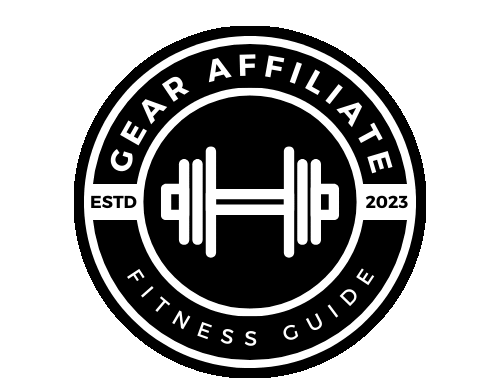
Written by our supplement testing crew
Built for lifters, athletes, and anyone serious about what they put in their body—this guide is written by real coaches who prioritize performance over hype.
How to Read a Supplement Label Like a Coach
Walk down any supplement aisle or scroll through Amazon listings, and you’ll find bold claims, flashy branding, and ingredient lists that look more like chemistry homework than health info. But if you want real results—and not just hype—you need to know how to read a supplement label like a coach.
We’re breaking it down step-by-step, so you can look past the marketing and actually understand what you’re putting in your body. This isn’t about being paranoid—it’s about being informed.
Why Reading Labels Matters
Reading the label gives you control. If you’re serious about your training, you should care about:
- What ingredients are doing the work
- How much of each ingredient you’re getting
- Whether it’s underdosed or overdosed
- What fillers or extra stuff might be hiding in the formula
Even the best-looking supplements can be underwhelming once you understand what’s inside. Learning how to read labels helps you avoid junk and choose formulas that actually support performance, recovery, and long-term results.
Step 1: Check the Serving Size First
Before you even look at the ingredients, check the serving size. A lot of misleading marketing happens here.
For example:
- A supplement might advertise “300 mg of caffeine!” — but that’s in two scoops, not one.
- Some pre-workouts only provide a full clinical dose of key ingredients if you take more than one serving, which means that $30 tub won’t last a month.
Pro tip: Always base your expectations on one full serving, and see how many servings you’re actually getting per container.
Step 2: Look for a Transparent Ingredient Label
You want a fully disclosed label. That means every active ingredient is listed with its exact dose.
Avoid proprietary blends like this:
“Performance Matrix – 5,000 mg” (Creatine, Beta-Alanine, Taurine, Glutamine)
That tells you nothing. You don’t know if it’s 4,900 mg of taurine and 100 mg of creatine. Brands use this tactic to save money and mask weak formulas.
Coaches rule of thumb: If they won’t tell you how much of each ingredient is in the blend, they probably don’t want you to know.
Step 3: Know the Clinically Effective Doses
To be effective, ingredients need to be dosed properly. Here are some reference doses you should know:
| Ingredient | Effective Dose | What It Does |
|---|---|---|
| Creatine Monohydrate | 3–5g daily | Strength, power, recovery |
| Beta-Alanine | 3.2–6.4g daily | Endurance, lactic acid buffering |
| L-Citrulline Malate | 6–8g pre-workout | Blood flow, pump, endurance |
| Caffeine | 150–300mg pre-workout | Focus, energy, alertness |
| L-Theanine | 100–200mg (with caffeine) | Smooths out caffeine, reduces jitters |
| Ashwagandha (KSM-66) | 300–600mg daily | Stress, recovery, hormonal support |
| Whey Protein | 20–30g per serving | Muscle repair and protein synthesis |
If a product contains key ingredients far below these levels, it may not do much—no matter how fancy the branding looks.
Step 4: Scan the Inactive Ingredients (a.k.a. What Else Is in There?)
Every supplement contains inactive ingredients—things like:
- Sweeteners (sucralose, stevia, monk fruit)
- Colors or dyes
- Flavorings
- Preservatives
- Fillers (like maltodextrin or silicon dioxide)
These aren’t inherently bad, but if a product has a long list of additives—or ingredients you can’t pronounce—it’s worth asking why.
Tip: If a supplement lists “proprietary flavor matrix” or dozens of artificial colors and thickeners, think twice. It’s often a sign of a low-quality product with marketing-first priorities.
Step 5: Look for Third-Party Testing or Certifications
Reputable supplement companies will often include third-party testing seals or certifications, such as:
- NSF Certified for Sport
- Informed-Sport
- GMP (Good Manufacturing Practice) Certified
- Third-party tested for purity
These help ensure that:
- The label matches what’s actually inside
- The product is free of banned substances
- You’re not consuming dangerous contaminants
This is especially important for competitive athletes subject to drug testing—but it’s also good for anyone who wants to avoid being scammed.
Step 6: Match the Product to Your Goals
It’s easy to get caught up in ingredient lists and dosages, but none of it matters if the product doesn’t serve your goals.
Ask yourself:
- Am I looking for strength, endurance, recovery, or fatigue reduction?
- Do I want stimulant-based or non-stim?
- Do I need daily support (like creatine) or acute performance (like pre-workout)?
Don’t buy a supplement just because it’s trending or has cool packaging. Buy it because it fits your training and helps you perform.
Final Thoughts
Learning to read supplement labels like a coach means focusing on facts over flash. It means knowing what works, what doesn’t, and how much of each ingredient you actually need.
Here’s the quick checklist:
✅ Serving size makes sense
✅ Transparent ingredient label
✅ Clinical doses are present
✅ No junky proprietary blends
✅ Clean inactive ingredient list
✅ Third-party testing or certification
✅ Matches your actual fitness goals
Remember—supplements are just that: supplements. They can support your progress, but only if you choose the right ones and take them in the right context.
Stay sharp. Read your labels. And keep training like you mean it.
If you found this post to be helpful, then you may be interested in the rest of our blog page here.
At Gear Affiliate, we always want to give our readers more resources to research. Below are a few sources that we have found to be helpful relating to this topic.


